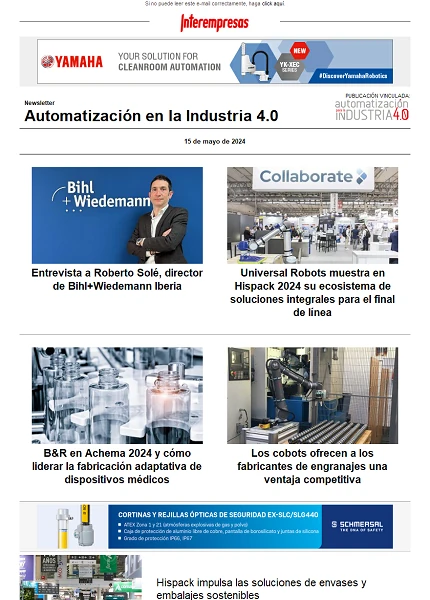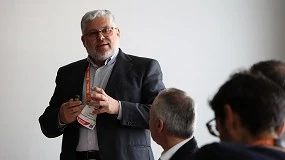Innovative probe of broadcasting of frequency jump
Inductive transmissions have a very short range (the receiver is mounted on the tip of the screw), while optical transmissions and the low-power radio can be transmitted to several meters. Optical transmissions used the line of focus between the transmitter and the receiver, although they also take advantage of the views of the interior of the machine. Radio transmissions also exploit these reflections, as well as a considerable diffraction around the objects of the machine, so they are suitable for machines of larger size in which the probe can be inserted in the component, or the machines of 5 axes in which the focus line cannot be guaranteed.
Main factors affecting the performance and reliability of the radiotransmisiones
- Broad spectrum or fixed frequency: what other devices can be found in the selected frequency range and what steps you should follow to allow their coexistence?
- Signal interference tolerance: if interference how can continue to operate the probe with reliability?
- Avoidance of 'dead point': If there are reflections within the machine generated destructive signal interference at certain points how can we maintain the operation of the probe?
- Compatibility with regulations: can the same tube be used worldwide without any risk of contravening the local radio frequency regulations?
Fixed radio frequency transmission technology
This technology has proven to be reliable, being its only limitation the number of available channels by band. However, these devices might be affected by local interference from other devices of radio from the factory which broadcast on the same frequency.
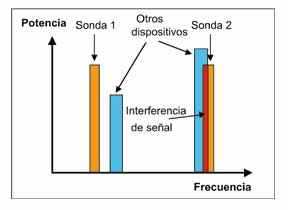
Probe of broadcasting of frequency jump
- Spectrum (DSSS) direct sequence: is simultaneously sent a signal at low power on a wide range of frequencies (as in wireless networks WiFi).
- Broad spectrum of frequencies (FHSS) jump: transmitting a signal at relative low power on a coded series of various frequencies, which will be identified by the transmitter and the receiver (just like in the 'bluetooth' devices and probe for Renishaw RMP60 radio system).
The RMP60 system of Renishaw is a FHSS device that operates on a band between the 2.402 and 2.481 GHz, with 79 channels of 1 MHz of bandwidth each. The system consists of two modules: the RMP, integrated in the probe, mounted on the spindle of the machine, and the RMI, connected to the CNC and mounted at some point in the static structure of the machine.
For transmission FHSS, the transmitter and the receiver must 'jump' of a channel to another, using all available channels in the band. In this way, they can coexist with other, DSSS and FHSS systems as well as other devices such as microwave ovens, also operating in this frequency band. The jump of frequency reduces the possibilities of other unauthorized recipient can monitor and intercept the probe messages, in addition, the possibility of receiving messages in the correct recipient is greater when there is more traffic radio.
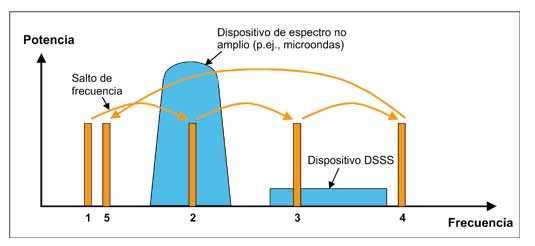
- In the first frequency, spectrum is free and is successful transmission between the probe and the receiver.
- After the first jump, the frequency changed to a channel within a frequency range occupied by another device with transmission power. In this case, is not achieved the probe as a lower power transmission.
- Now, the frequency has jumped to a point where it overlaps with a DSSS device and transmits over a wide frequency range, but at low power. The transmission of the probe has enough power to continue, while the DSSS device maintains a loose bandwidth to transmit their messages.
- Free frequency: correct transmission.
- The probe continues with the different possible jump sequences will visit in all the available channels.
Tolerance to signal interference
To interfere with the broadcasting of a tube, another signal has to coincide with the same channel at the same time and cancel the signal of radio of the probe. This situation is unlikely, since the 2.4 GHz band is reserved for low-power transmissions and the amount of devices that can use this range of RMI at any time is very low. The likely impact of interference in the signal would be the loss of a few bits in communication. If a message is blocked by another device, it would have to jump with the same sequence of channels and the same intervals of time that the probe for blocking the communication of a continuously. Realistically, the possibility of this happening is very small.
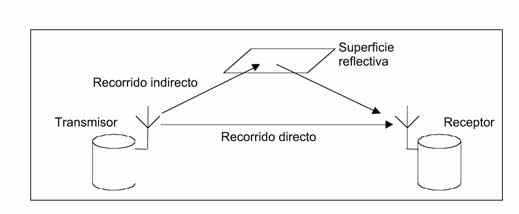
Avoidance of 'dead points' in the transmission
If you have this problem, change the channel on a system of fixed wavelength, usually only provides move the null character to another part of the machine. Many fixed wavelength systems use two receivers oriented 90 degrees in order to reduce the possibility of null characters in the receiver.
A system of frequency jump avoids the 'dead points' periodically changing the channels. The frequency of 2.4 GHz band provides a range of wavelengths between 0,121 m (channel 78) and 0,124 m (channel 00). Normally, the mirrored route is substantially longer than the direct route (at least 2.5 wavelengths longer). In this case, if there is a complete zero channel 78, the attenuation of 00 channel will be only 6 dB, therefore, the transmission can be done correctly but there are zero at any wavelength. You only need a receiver for great performance.
In practice, there are of course many signals reflected with different lengths of routes, so the generation of zero coming in frequencies of successive channels are highly unlikely. In addition, the reflected waves will be reduced in amplitude, thus decreasing the possibility of destructive total interference at any wavelength.

